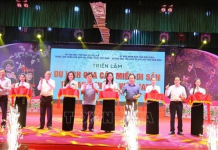Located 7km from the town of Sapa in the southeast, the ancient rocky ground, covering an area of 8km2, includes over 200 boulders in different sizes scattered on terraced fields in Muong Hoa Valley of the communes of Hau Thao and Ta Van. The ground was discovered by the Russian-Frenchman Victor Goloubev, a famous researcher on Indochinese Studies in 1923. Since then, it has attracted a large number of both domestic and foreign scientists.
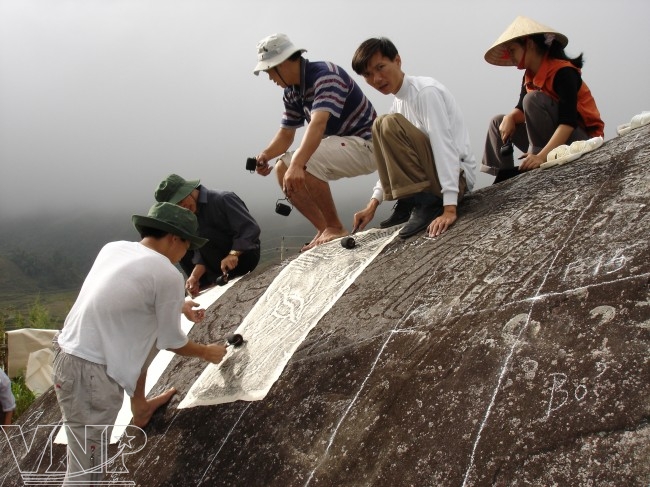 Researchers collect carved patterns on a boulder in Sapa. Photo: Ngoc Thanh 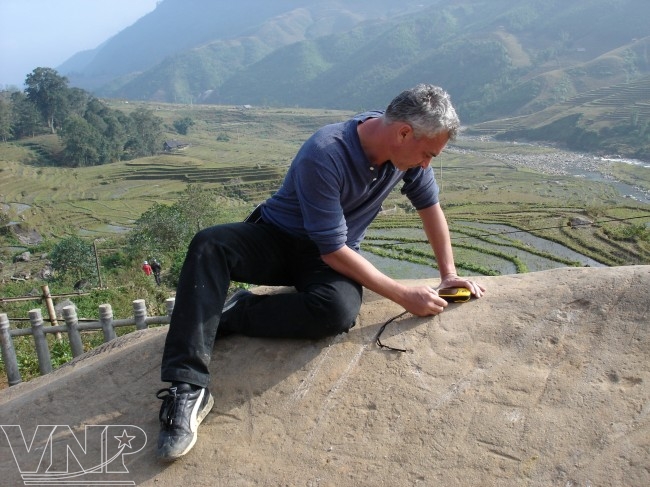 Prof. Phillipe Le Failler from the French Far Eastern Archaeological Scholar Institute takes the co-ordinances of each boulder. Photo: Ngoc Thanh 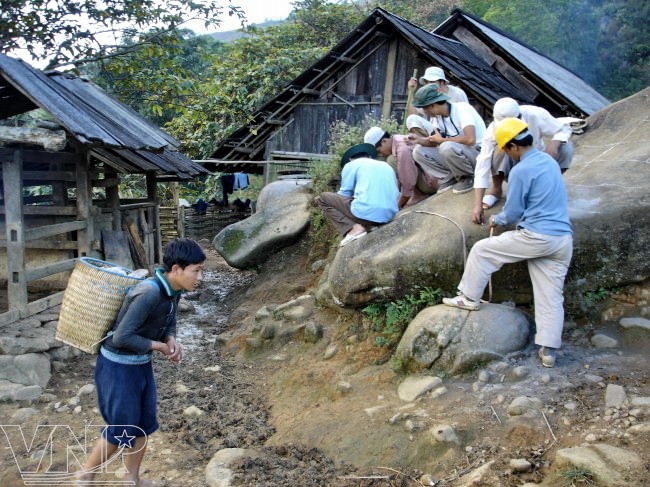 Ancient boulders scattered in the gardens of ethnic people. Photo: Ngoc Thanh 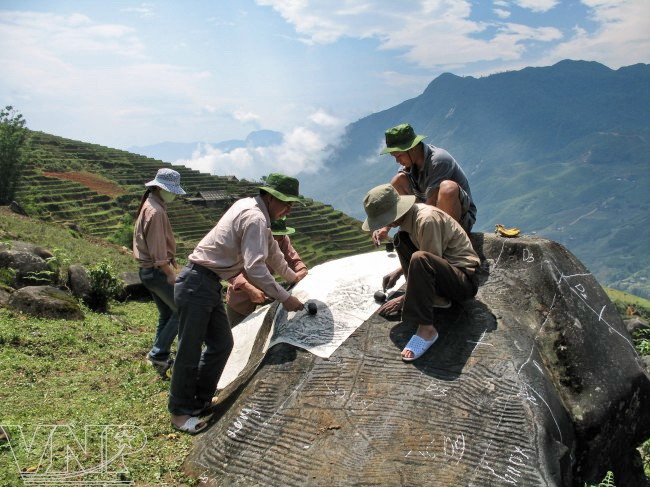 Ancient boulders in terraced fields at the top of a mountain. Photo: Ngoc Thanh 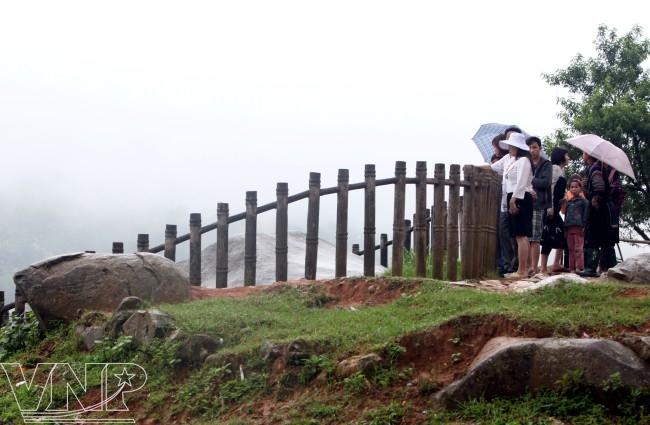 Ancient boulders are protected by a fence. Photo: Tat Son  An ancient boulder near the road. Photo: Tat Son 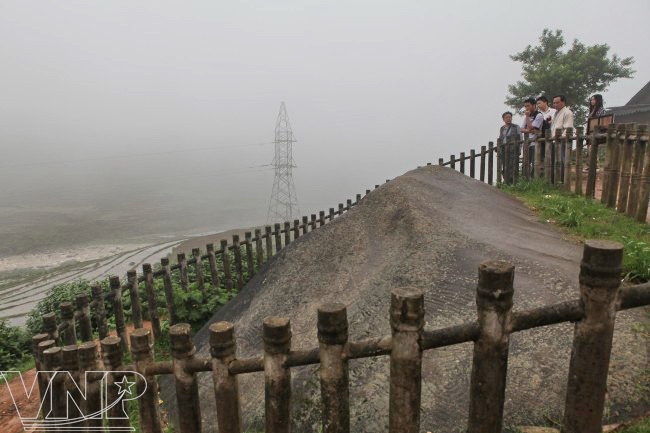 Tourists visit the ancient rocky ground to learn about the mysterious patterns on each boulder. Photo: Tat Son 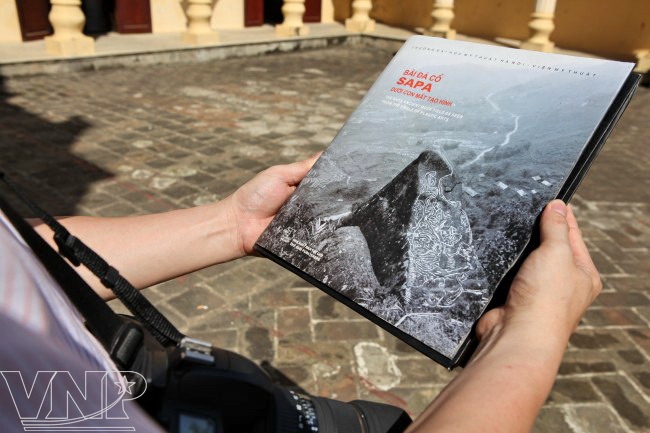 A book on the ancient rocky ground was compiled for research and tourism purposes. Photo: Tat Son |
In Pho Hamlet of the Mong people, the number of boulders is small but most of them are quite big. The area that has the largest number of boulders is the road bordering the two communes of Hau Thao and Lao Chai and the path through terraced fields to Hau Chu Ngai Hamlet of the Red Dao people. Here, there are about 100 boulders of different sizes and shapes that are called “the heavenly library” by the local people. Also, there are a few boulders in the area of the two communes of Ta Van and Su Pan.
According to the statistics of researchers, the rocky ground in Sapa has over 200 boulders with engraved patterns that show the culture of the ancient Vietnamese. The patterns, drawings and designs carved on each boulder are diversified and plentiful. However, most of them are in round shape, symbolizing the image of sun. In particular, sex scenes of men and women were also inscribed on some boulders. On others, there are short and long lines that may symbolize terraced fields, and rectangle motifs and roads leading to houses surrounded by trees. There are some boulders carved with compasses, human beings and yin and yang shapes. The engraved patterns on the boulders are still mysterious and not decoded. However, they show culture, thoughts and traditional beliefs of the ancient Vietnamese.
Images carved on boulders on the ancient rocky ground in Sapa. Photo: Tat Son
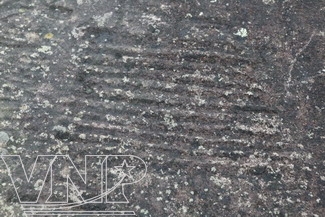 |
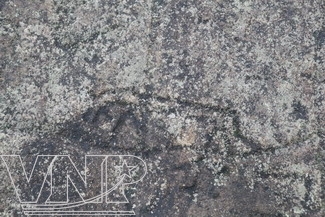 |
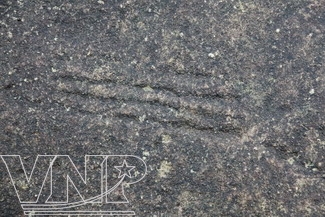 |
 |
 |
 |
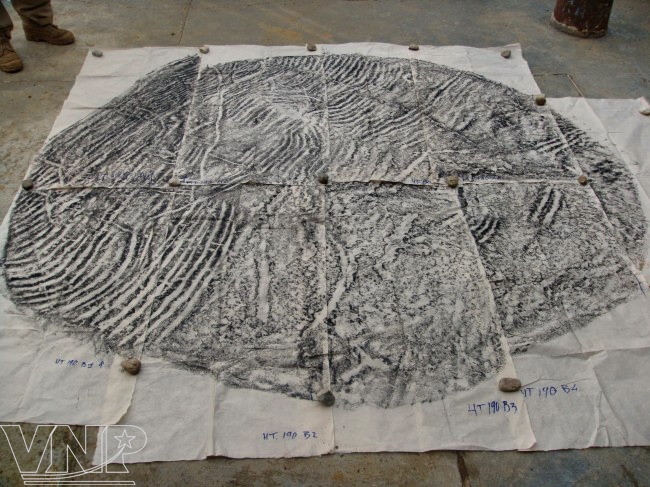 The copies of patterns carved on boulders on the ancient rocky ground in Sapa. Photo: Ngoc Thanh |
With a great value in terms of culture and history, the ancient rocky ground in Sapa has drawn attention from relevant bodies, historical researchers and scientists who want to decode and research mysterious engraved motifs, making a contribution to preserving the cultural values of the ancestors.
Story: Thuc Hien – Photos: Tat Son-Ngoc Thanh

